Affiliate links on Android Authority may earn us a commission. Learn more.
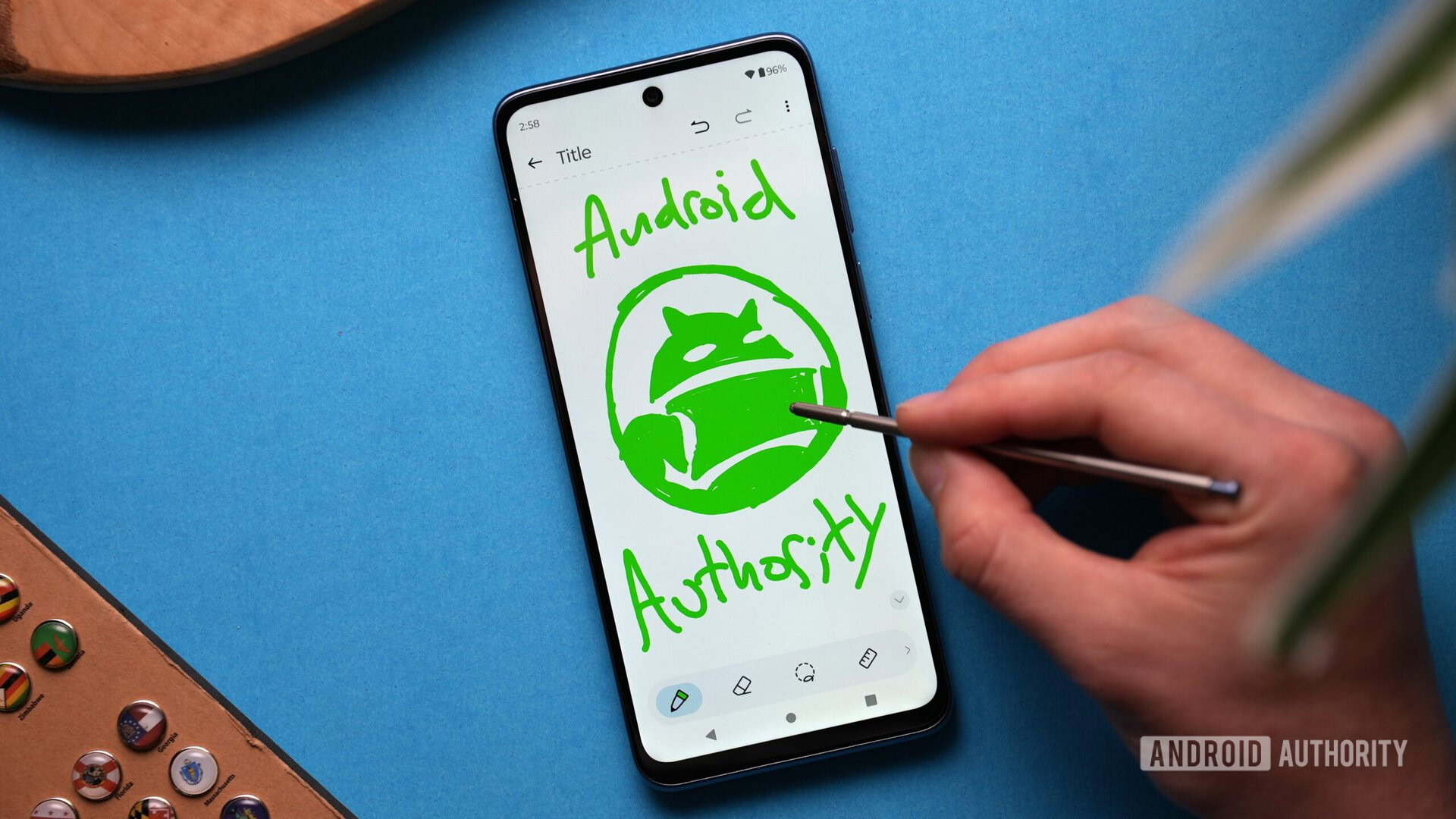
Motorola Moto G Stylus (2023) review: More stylus than substance
Published onMay 17, 2023
Motorola Moto G Stylus (2023)
What we like
What we don't like
Motorola Moto G Stylus (2023)
There aren’t many stylus phones to choose from these days. Samsung’s Galaxy S23 Ultra is the only name in town if you’re looking for a top-tier experience, but it will also make a considerable dent in your wallet. Luckily, Motorola continues to champion the cause for budget-friendly phones with the sought-after stylus, and with the latest LTE-only Moto G Stylus is doing so for its lowest price ever. But does it make too many compromises to stand out amongst competitors in the sub-$200 range? Find out in our Motorola Moto G Stylus (2023) review.
Motorola Moto G Stylus (2023) review: What you need to know
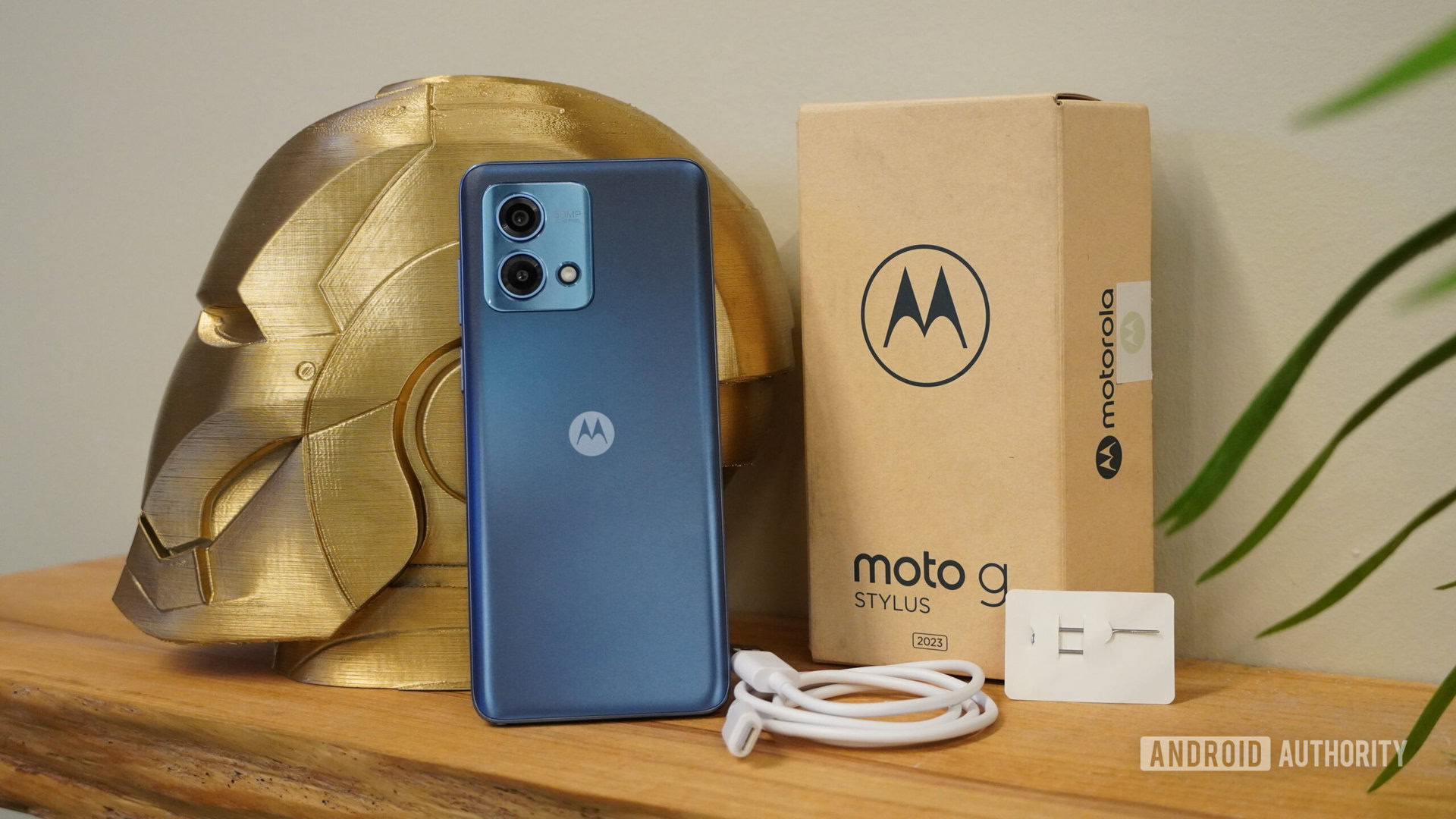
- Motorola Moto G Stylus (2023): $199.99
The Moto G Stylus (2023) is one of the latest entry-level phones rounding out Motorola’s Moto G family. The Moto G Stylus has always been a popular option for those looking to get a built-in stylus on the cheap, and with the 2023 model, Motorola has shaved down the specs in several areas to lower the price even more.
Compared to the 2022 model, the Moto G Stylus (2023) is smaller and lighter, features a lower-resolution display, a downgraded processor, fewer cameras, and less memory and internal storage. However, these cuts take $100 off the list price from the Motorola Moto G Stylus (2022), and you get support for slightly faster wired charging.
The Moto G Stylus (2023) trims down the specs for a more budget-friendly price tag.
The Motorola Moto G Stylus (2023) offers one base configuration, carrying 4GB of RAM and 64GB of storage. Though the internal storage is cut in half from the previous model, you can use a microSD card to expand it up to 1TB, almost double that of the Moto G Stylus (2022), whose expandability maxed out at 512GB. Motorola has yet to officially confirm it at the time of writing, but we expect there to be a higher-spec 5G version of the Moto G Stylus this year, as we had with the Moto G Stylus 5G (2022).
Our Motorola Moto G Stylus (2023) arrived with Android 13 out of the box, with an update policy promise of one full version update and two years of security patches. That means the device will see Android 14 but no further support. The Moto G Stylus (2023) comes in two colors: Blue and Rose Gold and comes with a USB-C cable but no wall charger in the box.
Though Motorola has found success with the Stylus series by offering one of the only affordable phones with a dockable pencil, there is intense competition for phones in the $200 price range. For instance, the Samsung Galaxy A14 5G has the same amount of memory and storage and the same size battery and charging speeds but adds 5G connectivity, support for NFC, and a solid update policy. If you want to stick with Motorola and can forgo the stylus in favor of 5G, the Moto G 5G has comparable features with a more powerful processor for only $50 more.
What I like about the Moto G Stylus (2023)
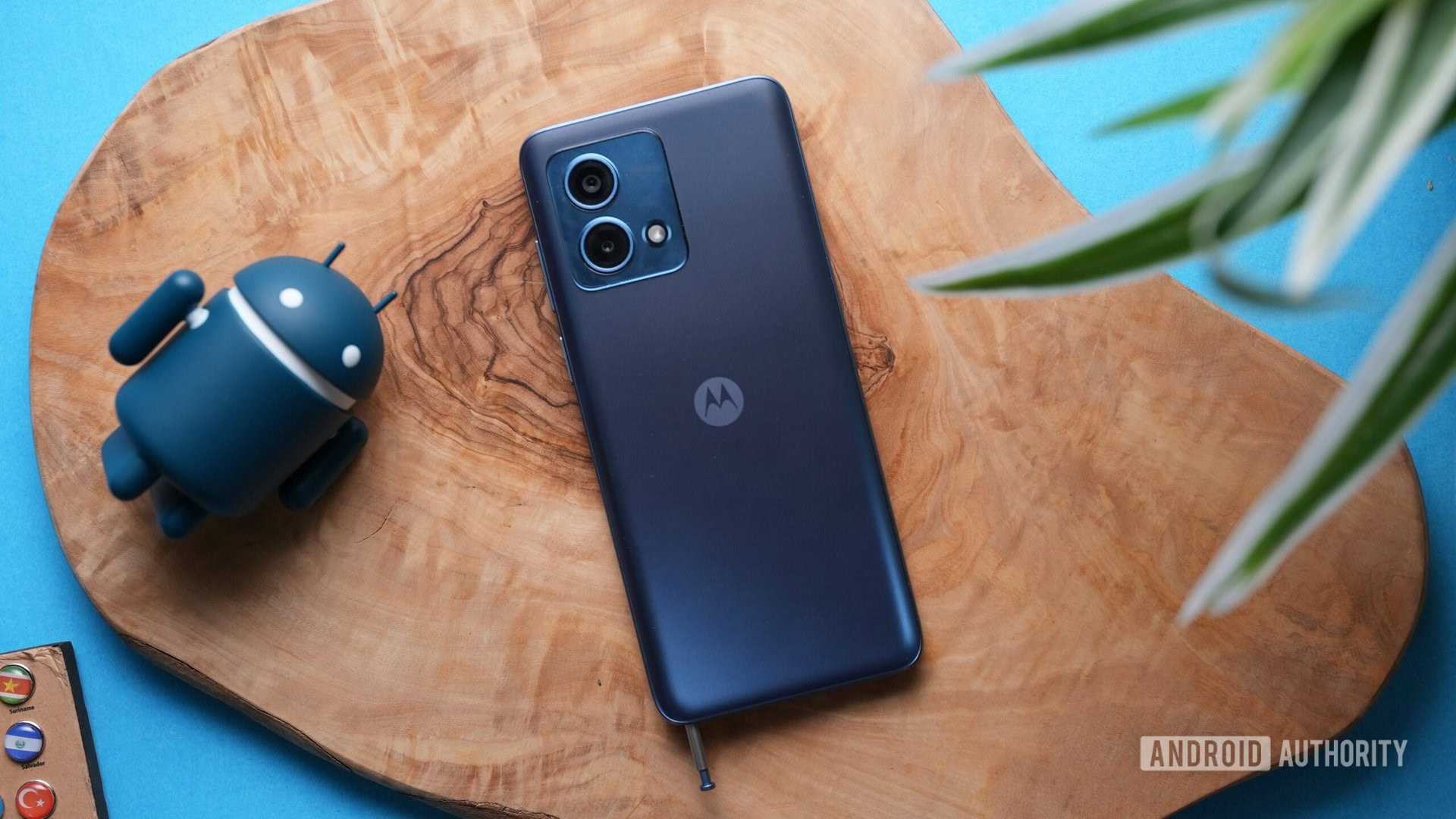
The new design of the Moto G Stylus is an excellent example of less is more. The display is 6.5 inches compared to the Moto G Stylus (2022) model’s 6.8 inches, which we found to be too tall to use with one hand, and instead of offering more screen real-estate for the stylus, it had relatively thick bezels along the top and bottom edges. The Moto G Stylus (2023) still has a bit of a chin at the bottom, but it isn’t as pronounced. Overall everything on the screen was comfortably within my thumb’s reach when using it, and I found that the tighter punch-hole cutout was less noticeable.
The backside switches up the plastic finish and is now made of PMMA (also known as acrylic). The matte finish gives it a more premium look and is much less fingerprint-prone than the glossy backside of the 2022 model. And being 20 grams lighter, the phone is more easily pocketable.
The stylus is just a metal pencil; there aren’t any of the fancy features to rival Samsung’s S Pen. Instead, it’s essentially just a secondary way to interact with the touchscreen, with the benefit of a built-in garage that keeps track of its last know location based on when and where it was last removed from the phone. Just be careful not to stick the stylus into the headphone jack, which could be an easy mistake, given they are along the same edge.
As a canvas for the stylus, the screen worked well enough for my quick doodles and handwritten notes. A small pop-up menu appears as soon as you unclick the pen from its nest. You can access Google Keep, a drawing pad, and ways to capture screenshots or create GIFs. There’s also a new handwritten calculator and the ability to convert what you write into text, which was pretty accurate despite my messy handwriting, and a live message feature that creates a short video of your drawings in motion.
The Moto G Stylus' pen packs plenty of fun features to use throughout the phone's long battery life.
As for software, Motorola provides a relatively clean version of Android 13 while keeping all of the company’s usual gestures, like twisting your wrist to launch the camera or making a chopping motion with your hand to turn on the flashlight, or flipping your phone face down to enable Do Not Disturb. I also appreciate that aside from the standard Moto apps, there was barely any bloatware pre-installed, which was different than what we found with the Moto G Power 5G and its “tailored bloatware.” We have asked Motorola what the deal is with different devices in their 2023 lineup having differing amounts of bloat and will update this article when we have a response from them.
Motorola continues to stay true to its bold declaration of two-day battery life. I found that the 5,000mAh battery was able to cross the finish line of a second day with light use, such as surfing social media, sending texts, or checking emails. But when watching a lot of videos or playing games, the lifespan was just over a day. One improvement the Moto G Stylus (2023) brings over its predecessor is support for faster wired charging at 15W compared to the previous 10W. Using a 15W wall charger, it took just under an hour to reach a 50% charge and roughly two hours to replenish fully, which is in line with our testing for the Moto G Power 5G. With a $100 price delta between the two, waiting a little bit longer to recharge is far more tolerable.
Another improvement Motorola has made here is in the audio department. There is still support for Dolby Atmos, but now the Moto G Stylus has stereo speakers instead of mono, separating the sound into two channels. The result is a more well-rounded listening experience, with the caveat that it can be a tad piercing at full volume.
What I don’t like about the Moto G Stylus
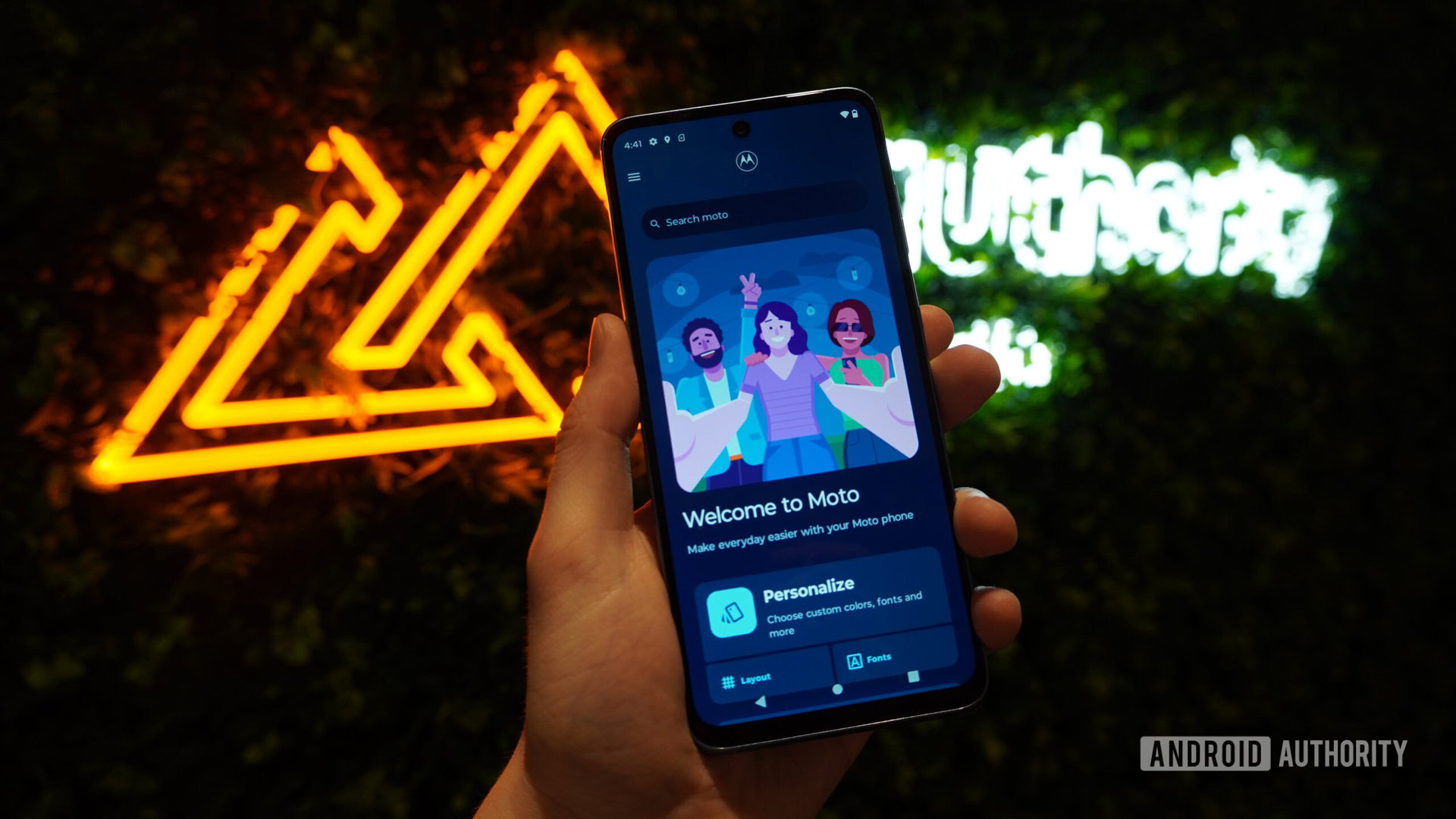
The Moto G Stylus (2023) is powered by a MediaTek Helio G85 processor, an unfortunate downgrade from 2022’s Helio G88, to say the least. The G85 chipset is three years old at this point and is more than a little sluggish. In terms of benchmarking, the Helio G88 chipset beats the Galaxy A14 LTE’s Helio G80 SoC. Still, it doesn’t come close to the Exynos 1330 of the Galaxy A14 5G and is similarly outpaced by the Moto G 5G’s Snapdragon 480 Plus chip.
You’ll have no trouble running apps like Instagram or Twitter, and web browsing is smooth enough. Still, when I launched my daily gaming session of Marvel Snap, there was a noticeable lag in gameplay, even at medium or low graphics settings. The phone also became hot in my hand after 30 minutes of gaming. Motorola has a dedicated Gametime mode, but it doesn’t actually change any settings on your device. Instead, it mainly blocks out other apps so they don’t bother you while playing.
Between the processor regression, reduced RAM and storage, lower resolution display, and the return of the 2MP macro lens, I'm not sure what's worse.
The LCD display retains the Moto G Stylus (2022)’s 90Hz refresh rate, which is respectable at the new cheaper price range. However, the resolution has been reduced from FHD+ to HD+, featuring just 1,600 x 720 pixels (vs 2,460 x 1,080 pixels on the 2022 model). Going from a 1080p screen down to 720p is pretty disappointing, and it made the more stylish pre-installed interactive wallpapers unusable for me. Just look at how jagged and rough the curved lines look in the screenshots below:
Then there’s the lack of NFC. We’ve already harped on how many recent Motorola phones are sorely lacking this feature, so I won’t pile on too much here. But it does mean no support for things like Google Pay or Nearby Share. Nearly every other smartphone at this price recognizes NFC as an essential feature in 2023.
Lastly, the cameras see a rather disappointing changeup. We thought we were finally done with the 2MP macro lens when the Moto G Stylus (2022) got rid of it, but we were sadly mistaken. The Moto G Stylus (2023) has brought back the underwhelming 2MP macro on the rear, replacing the much more useful 8MP ultrawide and 2MP depth lens. The selfie camera has also had its megapixels cut in half from 16MP to 8MP, but the pixels themselves are larger (1.12µm compared to 1.0µm), so this isn’t as significant a downgrade as it appears. Let’s look at how the cameras perform in the next section.
Motorola Moto G Stylus (2023) camera review
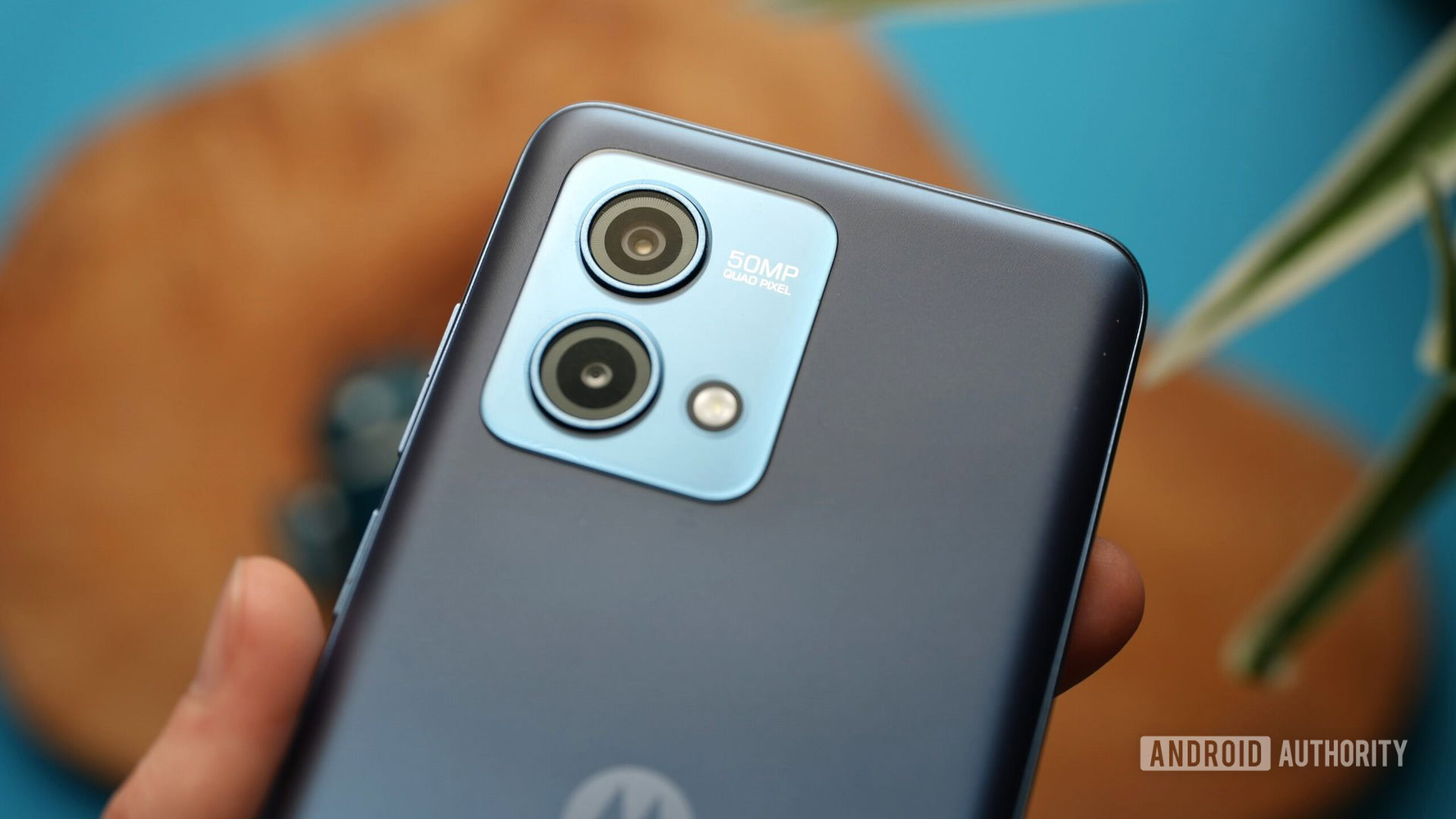
Motorola didn’t change much with the 50MP primary shooter on the backside, aside from making the aperture slightly wider at f/1.8 compared to the previous f/1.9 to let a bit more light in. Images bin down to 12.5MP by default, though it’s easy to switch to a full-resolution shot from the camera settings. I did find the suggestions to not use the full 50 megapixels in certain lighting conditions a little annoying, particularly while indoors, and they can’t be disregarded if you want to default to your better judgment.
When shooting with all 50 megapixels, the exposure is more natural to the setting. As you can see in the photos of the boat harbor below, the marina sign is a lot brighter when binned down. More evidently, in the photos of the fountain, the sky is much too overexposed so as to turn completely white in the 12.5MP version. The 50MP Ultra-Res mode doesn’t noticeably take any longer to process, but neither mode produces anything beyond “okay” in terms of results.
The primary camera can digitally zoom in up to 8x, but anything beyond 4x tends to lose detail and become blurry. This is all pretty standard for an entry-tier smartphone, as they will always lack dedicated zoom hardware. Low-light shots turn out fairly clear and color-rich, whether indoors or outdoors, and expectedly don’t suffer as much from overexposure. If it’s very dark and you are using Night Mode, expect to wait one to two seconds for the phone to begin shooting and then another three seconds for it to actually take the picture. And if you aren’t holding the phone absolutely steady or the subject in the frame is moving, be ready for a lot of blurriness.
Video recording maxes out at 1080p at 30fps on both the front and back cameras, which is the average for devices at this price. It’s a shame you can’t watch videos in full resolution on the phone’s 720p display, but they turn out pretty good nonetheless. Both cameras are prone to too much overexposure given plenty of sunlight, but they keep up with quick movements, and the mics pick up audio adequately.
There’s also a new Spot Color mode that lets you pick a color, and then the camera tries to turn everything else black and white. I say tries because, as you can see in the photos below, it was able to eliminate everything that wasn’t orange or red, but it didn’t retain all the orange in the lion painting or our Google basketball. It also left a few splotches of orange on the tarp beneath the painting.
The 2MP macro camera is another story from the main camera entirely. With such a low-resolution sensor, the detail is unsurprisingly nothing to write home about, even when you’re right up close to the subject. Images come out a little more saturated than the main shooter, with the flower in view appearing more yellow than it really is, and images are rather soft around the edges. Typically, the best focal distance with a macro is about 4cm (or the width of two fingers if you don’t have a ruler), but it still doesn’t feel quite right here. In the end, it’s probably easier to just use the primary shooter for close-ups instead.
On the selfie camera, all of the beauty filters are on by default, which is still overkill but not as aggressive as before. The colors are vibrant across all modes, but surprisingly, I found the portrait mode to deliver the sharpest-looking shots under good lighting. There wasn’t much difference between shooting in normal or Pro mode, with both looking a little washed out. Portrait mode seemed to narrow in on the details of my face best without making me look too pale or my hair too fuzzy, although the background was at times overexposed.
The selfie shooter has a cute light-up ring around the punch-hole camera that blinks when enabled, which I suppose is to help indicate where to look. There are also a few odd features to enable photo-taking, such as an Auto-Smile Capture, which will snap a picture as soon as it detects someone smiling, and a Gesture Selfie feature that does the same thing when it sees the palm of your hand. Neither feature was reliably responsive, taking a few tries to activate, but it can be useful if you don’t have a free hand.
Motorola Moto G Stylus (2023) specs
| Motorola Moto G Stylus (2023) | |
|---|---|
Display | 6.5-inch IPS LCD 90Hz refresh rate |
Processor | MediaTek Helio G85 |
Memory / Storage | 4GB RAM / 64GB Expandable up to 1TB |
Power | 5,000mAh battery 15W wired charging |
Cameras | Rear: -50MP wide (0.64µm, f/1.8) -2MP macro (f/2.4) Front: -8MP wide (1.12µm, f/2.0) Video: 1080p at 30/60fps |
Audio | Dual stereo speakers Dolby Atmos Two microphones 3.5mm headphone jack |
Connectivity | Wi-Fi 802.11 Bluetooth 5.0 USB-C 2.0 |
Software | Android 13 (upgradable to Android 14) MyUX |
Durability | Glass front, plastic back, plastic frame Water-repellant design |
Dimensions and weight | 162.9 x 74.1 x 9.2 mm 195 g |
Colors | Blue, Rose Gold |
Should you buy the Motorola Moto G Stylus (2023)?
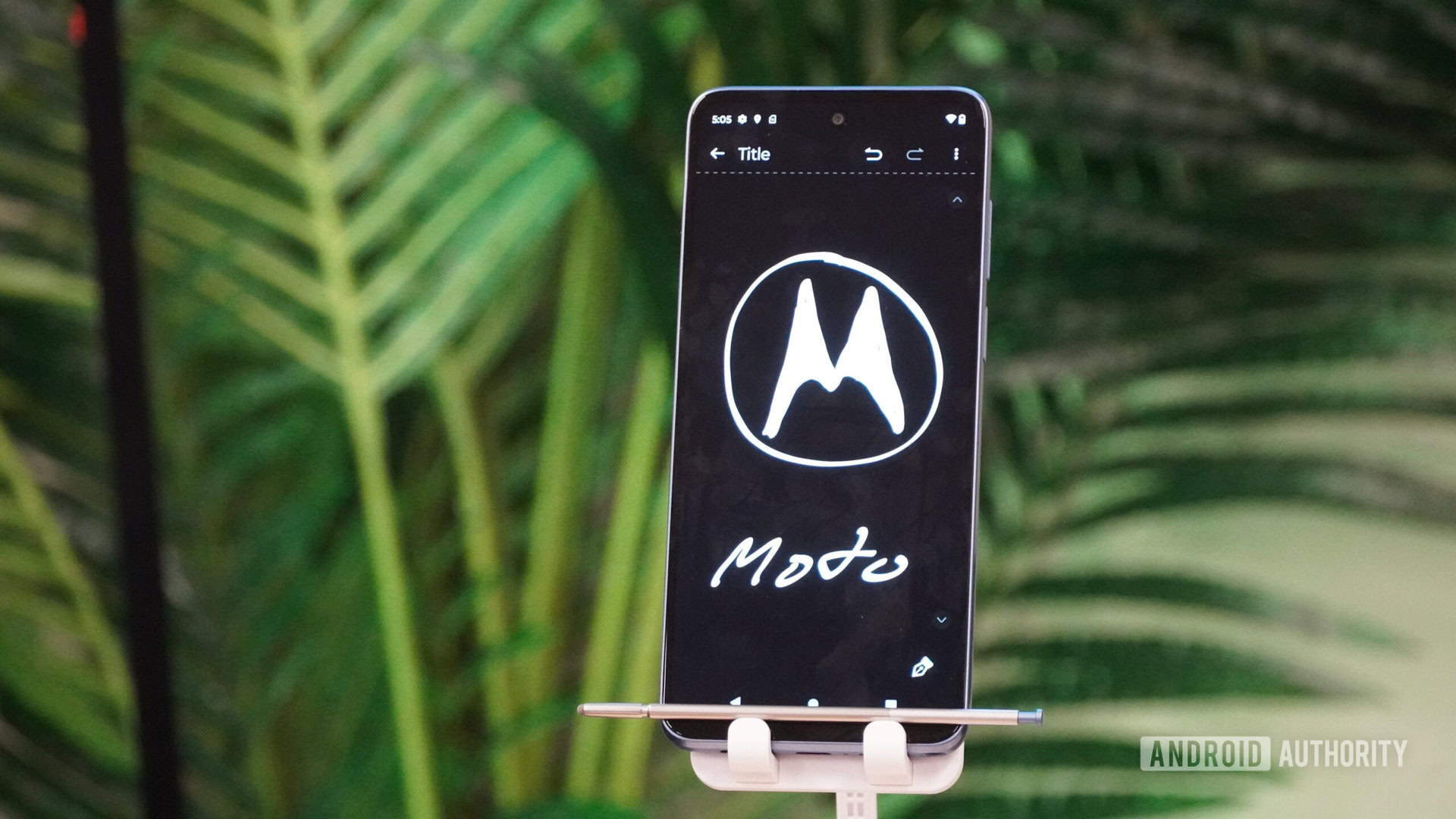
Overall, the Motorola Moto G Stylus (2023) is a case of a couple of steps forward with several steps back, with the most evident cost-cutting measures hitting the cameras. Personally, I wouldn’t take a weaker processor, less memory and storage, a lower resolution display, and only one good camera on the rear in order to save $100. But here’s the biggest kicker; you actually wouldn’t be saving money, since you can frequently grab the LTE version of Moto G Stylus (2022) ($102.69 at Amazon) for around $170 on sale — $30 less than the “cheaper” new model.
The Moto G Stylus (2023)'s predecessor offers more bang for the buck, as do competitors in this price range.
Still, the lighter matte design and smaller size lend themselves better to this iteration of the Moto G Stylus, which is still the most affordable option for a smartphone with a built-in stylus at MSRP. If you have a young, aspiring artist in the family who’s ready for their first smartphone, the Motorola Moto G Stylus (2023) isn’t a terrible choice. However, plenty of other budget-friendly devices offer a better everyday experience if you can drop the pen or are willing to buy a third-party stylus.
The Samsung Galaxy A14 5G ($199 at Amazon) is the obvious alternative here, with a superior processor, sharper display, NFC support, and a much longer update commitment of two full Android versions and four years of security patches compared to Motorola’s one Android update and two security patches. Alternatively, it’s worth waiting for the soon-to-release Moto G 5G (2023) for only $50 more. It will pack the same 5,000mAh battery and 15W wired charging but adds 5G connectivity, superior processing power, and a 120Hz refresh rate with a Full HD+ display.
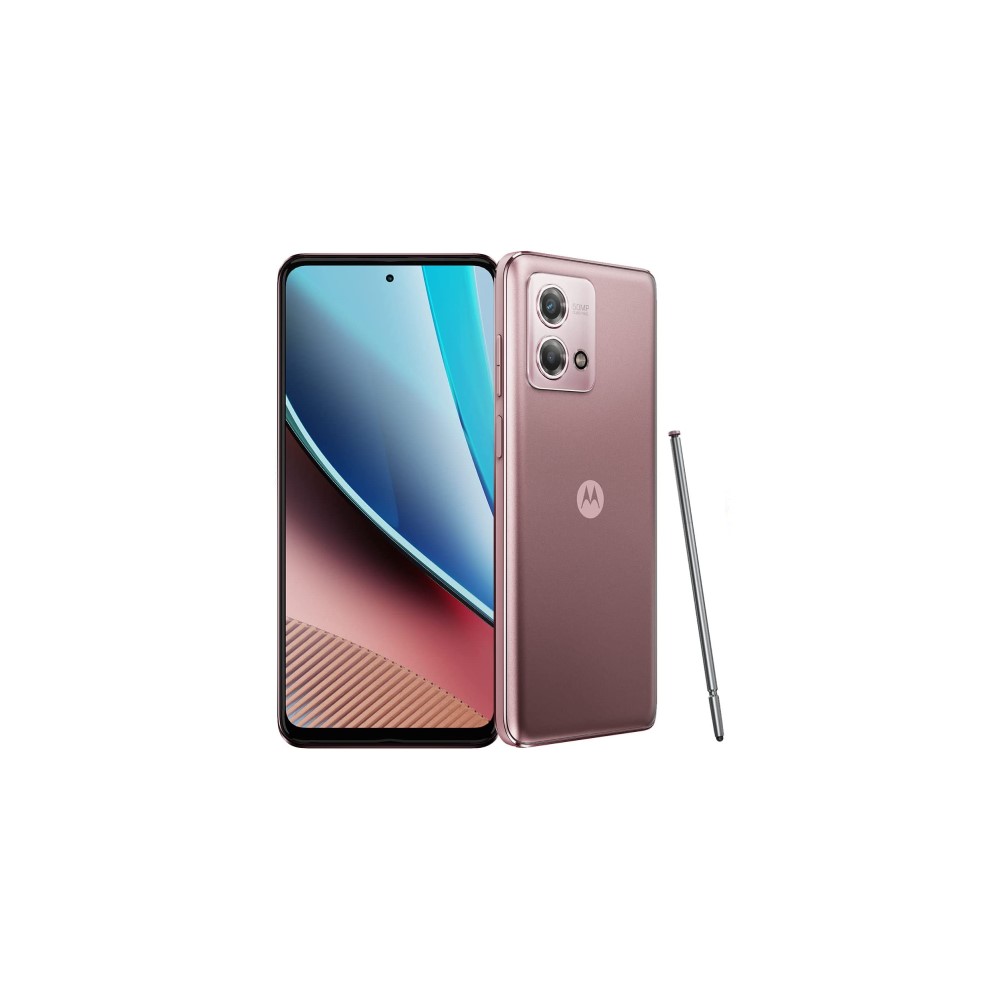
Motorola Moto G Stylus (2023) review: FAQs
No, the Motorola Moto G Stylus (2023) does not support wireless charging.
Unfortunately, the Motorola Moto G Stylus (2023) does not support NFC.
The Moto G Stylus (2023) has a water-repellant design, which Motorola says “creates a barrier to help protect against moderate exposure to water such as spills, splashes, or light rain.” In short, it is not waterproof.
The Moto G Stylus (2023) houses the MediaTek Helio G85 processor, which isn’t great for gaming. There can be a noticeable lag for gaming, even when playing on the lowest graphical settings.
Yes, the Motorola Moto G Stylus (2023) has a side-mounted fingerprint sensor that is snappy and responsive.